Pursue research in a three-dimensional approach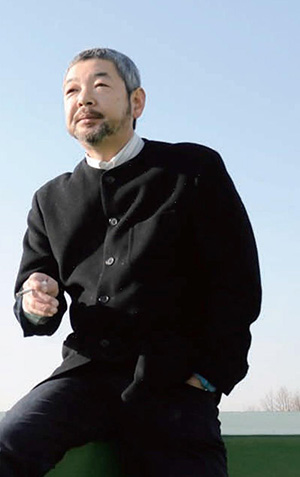
Collecting books and documents then organizing and studying them is surely a classic research method. In addition, we actually visit the field, and conduct fieldwork and interviews. We analyze photos and videos taken in the field, put effort into comparative research between research areas and localities, and make full use of internet tools and services such as websites, blogs and Tweets. Wide-range information gathering is being conducted from a three-dimensional perspective.
The basis of research is person-to-person trust relationships.
Needless to say, culture is created by humans. Therefore, it is important to respect each other’s cultures and mutually build trustworthy relationships. What supports cultural research is a sincere attitude toward society, level gaze, skepsis for things and phenomena, and constant enthusiasm. These are the bases upon which to build the most important human relationships.
Professor in the Faculty of Liberal Arts, Japan and Asia Culture special course
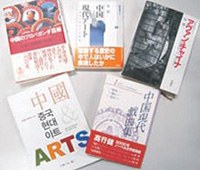
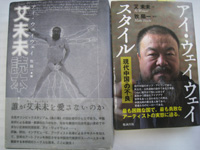
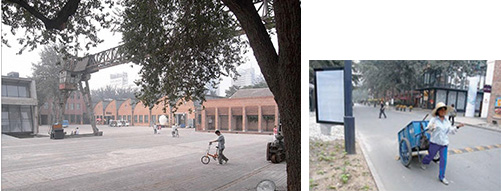
Beijing Dashanzi 798 Art District
In the 2000′s, artists gathered, seeking a place for free expression. Currently, the place has become a sightseeing spot, and is crowded with stylish young people.
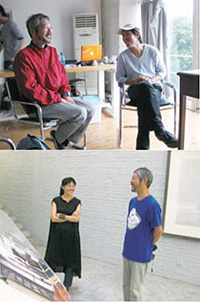
Panda Artist
Zhao Bandi at the studio in 798 District
With inri, Three Shadows Photography
Art Center in Caochangdi
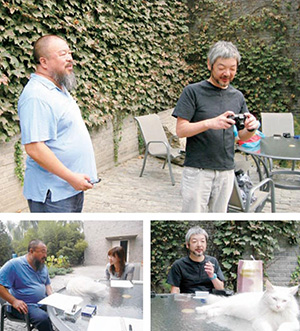
Interview with Ai Weiwei, September 2010
At Fake Studio, Caochangdi, Beijing with 40 cats and dogs (Interview and photoshoot: Masami Miyamoto)
I got to know the works of a playwright, Cao Yu (1910-1996) when I was at school, and was completely fascinated by them. Then I went abroad to study, to be exposed to the original books and see the real stage. I followed in his footsteps before his debut as a playwright, and found hidden works, and visited him. When I was in graduate school, I presented my achievement at an international academic conference, and took the initial step as a researcher.
In the early 1980’s, a new rendering beyond a modern framework was also introduced in plays. That is, plays were transformed from Stanislavsky’s realistic plays to Brecht’s epic theatrical plays. Plays of Gao Xingjian whom I met around this time were also positioned in this trend. He received the Novel Prize in literature 20 years later. Prior to that, we published translated versions quickly.
After the Cultural Revolution, a new culture which no longer had the Maoist model started. I participated in a Chinese avant-garde group, “The Stars”, in the position of researcher, not as an artist. I became the last member of “The Stars”. The Chinese avant-garde group not only put an end to the Maoist model: It is still asking for democratization, and has not lost the attitude of social criticism. Its fellows include Huang Rui, and Ai Weiwei, who designed the Beijing Olympic Stadium (known as the Bird’s Nest). I still communicate with them every year, and exchange opinions.

Yuuri Sakai – studying in Beijing
2010-2012
The secret of the above number is that there was one student in each category, with one applying for a job, one who wanted to go to graduate school, and one who applied for government-sponsored overseas education.
Seniors pursue a track of a specialized field in accordance with their individual direction. In addition, lectures with an artist fromChina and independent seminars in Chinese are convened. The Beijing study course was conducted in September 2010-2013,2014(Guangzhou). Please come and visit our laboratory.
In the 1990’s, artists of BeijingEastVillage started radical performances in the nude. I interacted with them in Beijing, and summarized their activities. Fellows here include artist Ma Liuming, photographer Rong Rong, and musician Zuoxiaozuzhou. In the 2000’s, “art district” was formed in Beijing Dashanzi “798” old factory site and “Caochangdi”. I have been visiting the district for almost fifteen years, and recording its transformation.
I recently published two books regarding Ai Weiwei. In addition, I have a current-affairs satirical cartoonist, Wang Liming (“Rebel Pepper”), as a visiting researcher from 2014, and deepen my consideration of modern Chinese history and freedom of expression.


© Copyright Saitama University, All Rights Reserved.